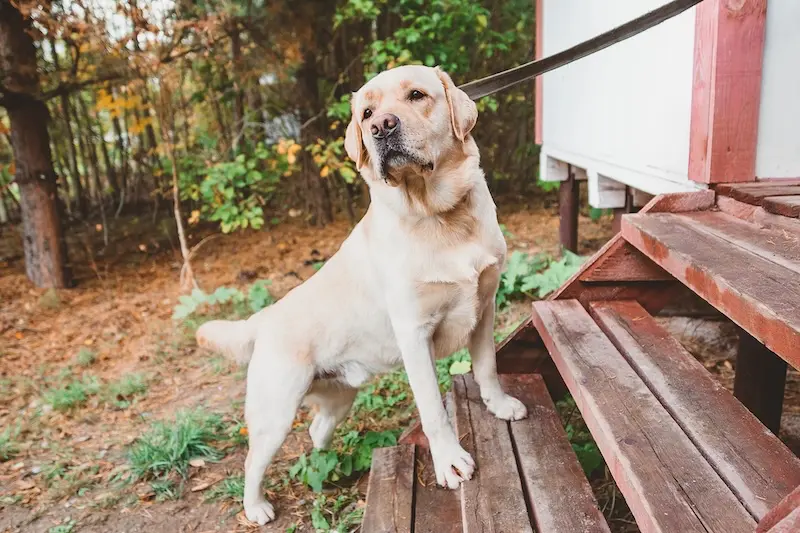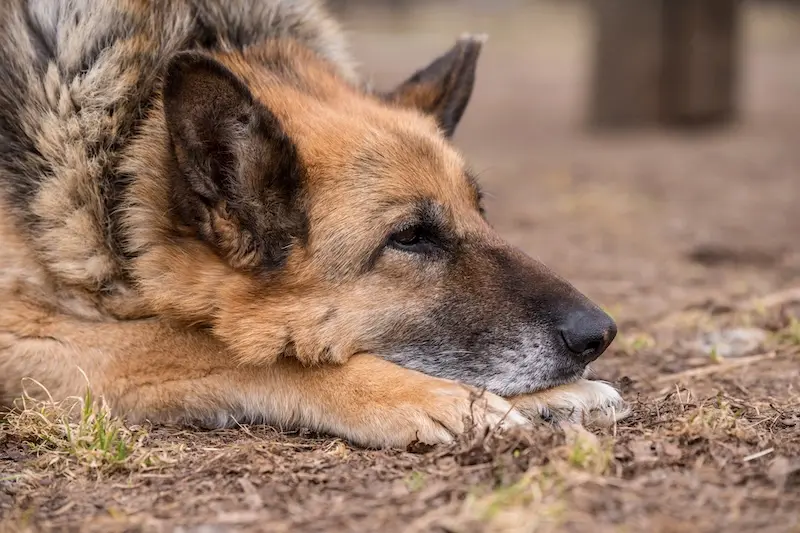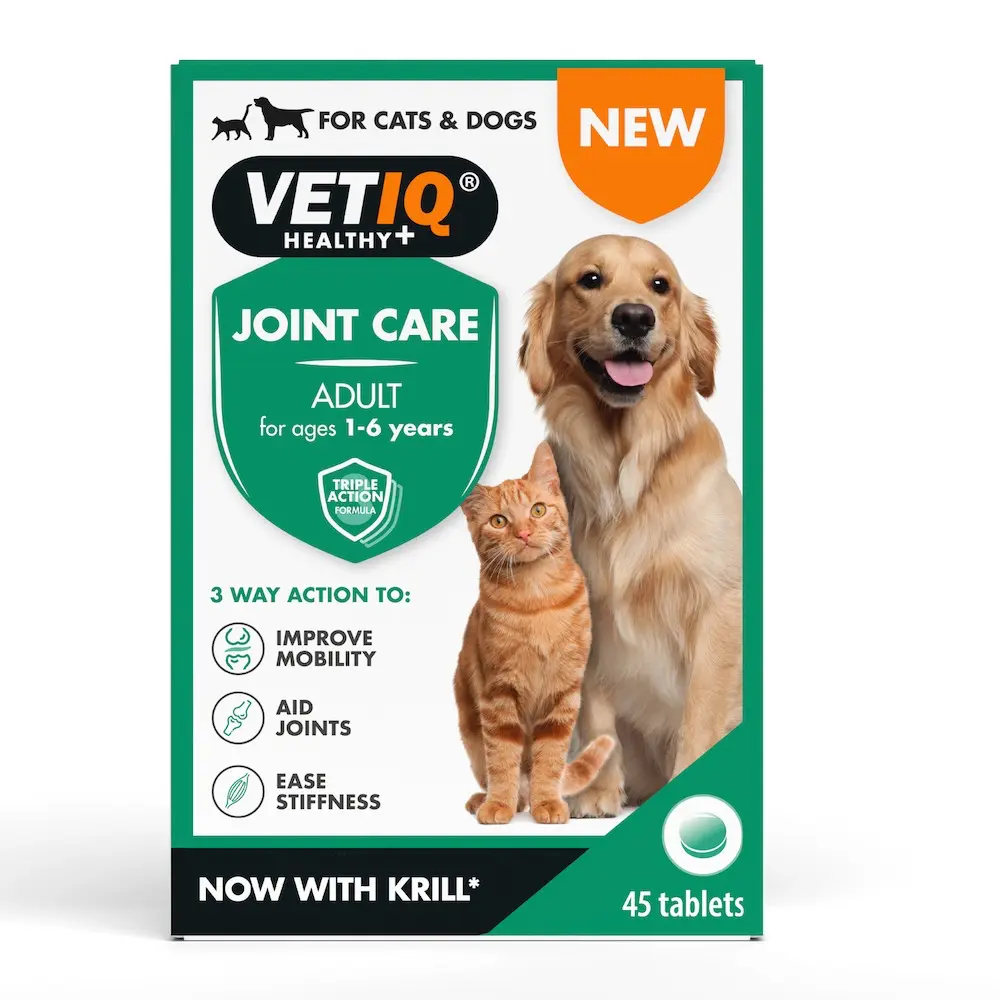Joint pain in dogs is more common than many pet owners realise, and it can really take the bounce out of your pup’s step. One day, they’re chasing tennis balls like a pro, the next, they’re hesitating at the bottom of the stairs. It’s tough to see our furry companions slow down, but there’s plenty you can do to help them feel more like their old selves.
In this guide, we walk you through how to recognise the early signs of joint discomfort and share practical tips for prevention and treatment. With the right support or a little extra TLC, you can help your dog stay happy, mobile, and ready for walkies!
What is joint pain in dogs?
Joint pain in dogs isn’t just a senior dog problem; it can sneak up on pups of any age or breed. While a bit of stiffness might seem like a normal part of getting older (we all creak a little!), real joint pain often hints at something deeper. From arthritis to ligament injuries and hip or elbow dysplasia, these conditions can turn a game of fetch into a real drag.
The trick is knowing when your dog’s slow-down is more than just a nap hangover. If they’re suddenly hesitating at the stairs or giving their toys the cold shoulder, it might be time to take a closer look. Conditions like degenerative joint disease or osteoarthritis can cause pain that worsens over time, but the earlier you catch them, the more you can do.
Thankfully, joint pain doesn’t mean your pup’s best days are behind them. With some thoughtful care, be it joint-friendly food or vet-approved joint treatments for pets, you can help them keep trotting comfortably.
Recognising the signs of joint pain in dogs
Dogs can be masters of disguise, especially when it comes to hiding discomfort. But if your once-bouncy buddy is moving a little slower or skipping out on walkies, there might be more going on than just a lazy day.
Spotting joint pain early means you can step in before it becomes a bigger problem. Keep your eyes peeled for two kinds of clues: physical changes and behaviour shifts. Together, they paint a clearer picture of what’s going on beneath the fur.
Physical signs of joint pain in dogs
Here are some of the more visible signs your dog might be dealing with achy joints:
- Limping or stiffness, especially after resting
- Avoiding stairs, jumping, or their usual zooms
- Swelling or tenderness around their joints
You might also notice them struggling to get up after a nap, slipping on smooth floors, or generally looking less confident on their feet. Some dogs even lick or nibble at sore areas.
If any of this sounds familiar, it’s worth chatting to your vet. The sooner you act, the sooner you can ease your pup’s discomfort.
Behavioural changes linked to joint pain in dogs
Joint pain doesn’t just affect movement; it can also change your dog’s mood. Watch out for:
- Snappiness or grumpiness out of nowhere
- More sleep than usual (even for a pro napper)
- Less interest in walks, games, or you!
- Sudden clinginess or the opposite, avoiding interaction
Some dogs might whine or groan more when they move or lie down. And if their favourite toy suddenly gathers dust, it might be related to pain rather than boredom. Behaviour changes are easy to miss, but they’re often the first sign your pup needs a little help.
What causes joint pain in dogs?
Joint pain doesn’t just arrive uninvited; it usually has a few common causes. Whatever the reason, knowing the cause helps you choose the right care.
The main categories to watch for include:
- Wear and tear from ageing or an active lifestyle
- Other culprits, like genetics, past injuries, or extra weight
Understanding the “why” helps you tackle the “what now.”
Ageing and wear & tear
As dogs get older, it’s common for their joints to wear down. Cartilage gets thinner, joint fluid dries up, and suddenly, bones start rubbing the wrong way. Muscle loss doesn’t help either, reducing the support around those hard-working joints.
This wear and tear can lead to conditions like arthritis, especially in senior dogs. But staying active (gently!), eating well, and adding a few joint-friendly habits into daily life can keep things moving smoothly for longer.
Other contributing factors
Genetics play a big part in joint health. Breeds like German Shepherds, Labradors, Rottweilers, and Bernese Mountain Dogs are more prone to issues like hip or elbow dysplasia. It’s not their fault; they’re just built that way!
Then there’s obesity. Extra weight means extra pressure on joints, which can speed up damage and pain. Previous injuries, rapid puppy growth, and poor diets also add to the risk.
Preventing and managing ongoing joint pain in dogs
Thankfully, there’s plenty you can do to keep your dog’s joints in tip-top shape, or at least keep things from getting worse. Prevention is always better than cure, and even if your dog already has joint pain, smart management can make a world of difference.
Let’s start with the basics:
- Feed a balanced diet rich in joint-supporting nutrients
- Keep exercise regular but gentle; think more strolls, fewer sprints
- Maintain a healthy weight (treats in moderation, we promise!)
- Consider ramps for stairs, soft bedding, and non-slip mats.
- Most importantly, don’t skip those vet check-ups; early detection is your best friend.
Treating joint pain in dogs
Just because your dog has joint pain doesn’t mean they have to hang up the lead. There are loads of ways to help them stay mobile, comfy, and ready for tail wags.
From vet-prescribed meds to lifestyle tweaks and extra support, joint pain can be managed effectively. It’s all about the right combo of care.
Veterinary guidance & lifestyle adjustments
Your vet is your co-pilot on this journey. They might suggest:
- Weight management to take pressure off those joints
- Soft, warm sleeping spots
- Using ramps instead of stairs
- Orthopaedic beds
- Short but frequent walks
Regular check-ins can also help.
Sometimes the smallest changes make the biggest difference!
Supportive therapies for joint pain in dogs
Want to go the extra mile? Supportive therapies can add real value:
- Physiotherapy or massage to reduce stiffness
- Hydrotherapy (yep, swimming counts!) for low-impact movement
- Vet-approved pet joint care supplements
There’s also laser therapy, acupuncture, and even regenerative medicine for dogs with chronic conditions.
With the right mix of support, your dog can stay active and content, because joint pain might slow them down, but it doesn’t have to stop the fun.
Explore the VETIQ Joint Care Solutions range
Joint pain in dogs doesn’t have to put a stop to wagging tails or happy walkies. By spotting the signs early, understanding the causes, and taking proactive steps, you can help your dog stay mobile, comfortable, and full of life.
That’s exactly where the VETIQ Joint Care range can make a difference, offering targeted support for dogs at every stage:
- VETIQ Joint Care Adult Tablets – a triple-action formula with Glucosamine, Chondroitin, Manganese, plus Omega-3–rich Krill Meal to lubricate joints, support cartilage, and keep muscles strong.
- VETIQ Joint Care Supplement Chews – bite-sized, tasty chews packed with nutrients that soothe stiffness, support cartilage, and please even the fussiest eaters.
- VETIQ Joint Care Senior Extra+ – specially formulated for older dogs to ease inflammation, maintain supple joints, and give ageing pups a new lease of life.
- VETIQ Arthriti-UM Advanced Tablets – a high-strength blend of nutrients for long-term bone health, flexibility, and active living.
Because every leap, stretch, and cuddle matters, supporting your dog’s joints today means more adventures, more comfort, and more years of happy companionship.
Explore the VETIQ Joint Care range and keep your best friend moving with joy!








